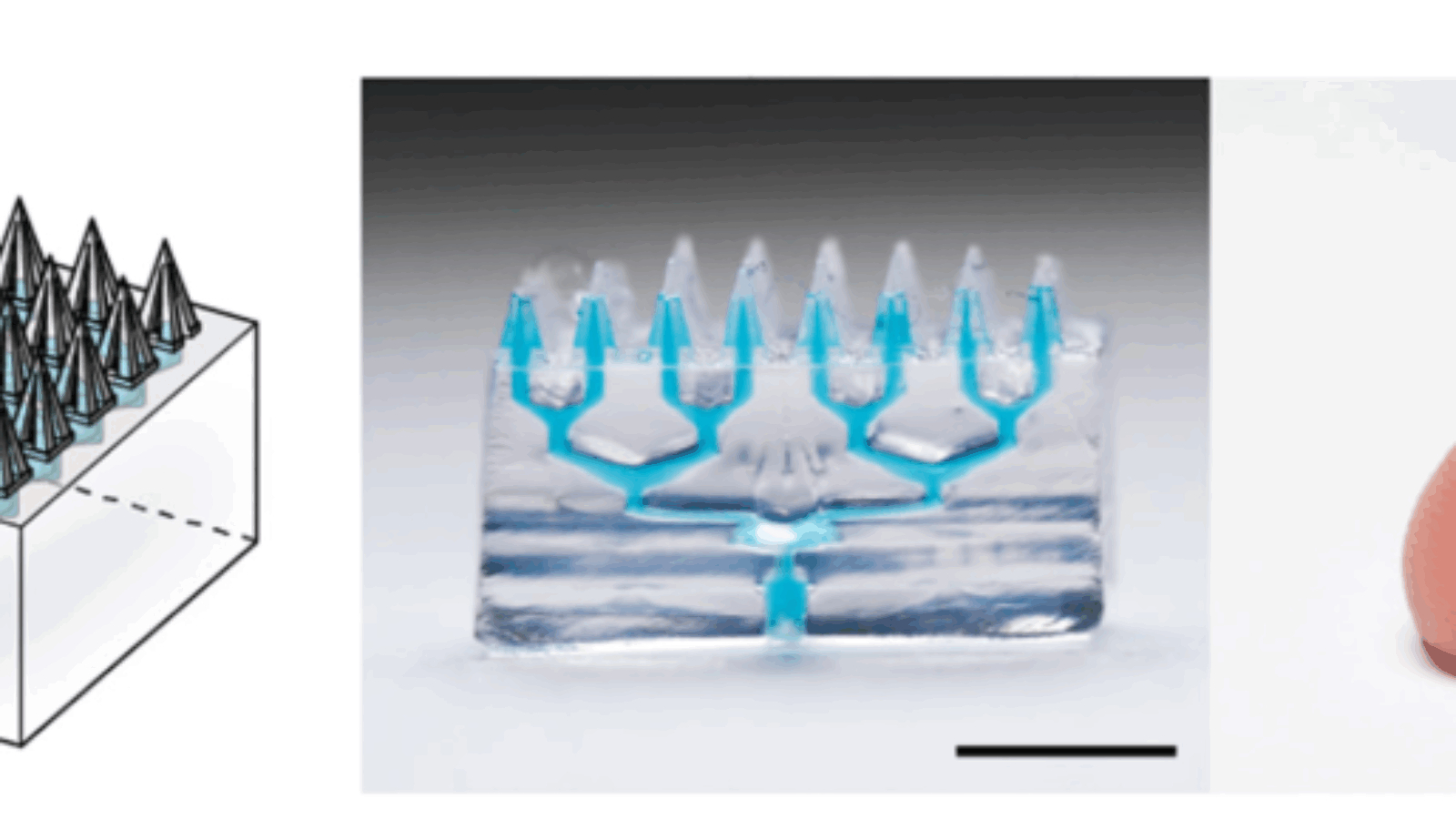US-based biotechnology company Continuity Biosciences has invested in 3D printed microneedle technology specialist PinPrint to expand its focus from therapeutic delivery into aesthetic and cosmetic applications.
Designed to deliver vaccines and active agents intradermally, PinPrint’s microneedle patches offer a potential alternative to traditional injections. With this investment, Continuity aims to enhance its capabilities in the drug delivery sector. The company is also working with the Grattoni Lab at Houston Methodist Hospital to develop implanted nanofluidic platforms for extended, zero-order release.
Additionally, Dr. Venugopalan is set to join PinPrint’s Board of Directors (BoD). “This investment allows us to expand from implanted nanofluidic systems to a non-implanted microfluidic platform,” said Ramakrishna Venugopalan, PhD, Co-Founder and CEO of Continuity Biosciences.
“It opens up new possibilities for more effective delivery of dermatologic, aesthetic, and cosmetic agents directly into the dermis,” Venugopalan said.

Over-curing problem solved with iCLIP
PinPrint was co-founded by Dr. Joseph DeSimone, Co-founder and former CEO of California-based 3D printer manufacturer Carbon. Alongside Stanford University researchers, DeSimone developed a 3D printing method that addresses resin over-curing, a challenge that hinders the precise construction of microchannels and voids in medical devices like microfluidic-backed microneedles.
The technology behind PinPrint’s approach is based on this resin 3D printing process. Last year, their research was published in Proceedings of the National Academy of Sciences (PNAS) journal, introducing the injection CLIP (iCLIP) method.
iCLIP improves the resolution and precision of 3D printed microfluidic devices by continuously feeding fresh resin into negative spaces during printing, preventing over-curing and ensuring a more accurate structure.
Unlike traditional 3D printing methods, which struggle with over-curing that can distort the printed channels, iCLIP ensures that fresh resin fills these spaces, maintaining both the integrity and precision of the print. This ability to control resin flow leads to the creation of microchannels with smaller diameters and heights, enhancing the functionality of printed devices.
The iCLIP methods is especially valuable in applications requiring high precision, such as drug delivery and biomedical devices. For example, its microneedle patches aim to improve the delivery of vaccines and therapeutic agents.
The iCLIP method allows PinPrint to produce smaller, more accurate devices, improving the delivery of treatments while offering non-invasive alternatives to traditional injection methods.
Beyond microneedles, the iCLIP method has broad potential applications in areas like vascular networks, microarrays, and diagnostic devices. PinPrint is working to expand its portfolio of products using iCLIP, with a focus on biomedical and pharmaceutical uses. This method promises more efficient drug delivery systems, providing alternatives to current methods.
Manufacturing on Demand
“By integrating high-resolution 3D printing with advanced drug delivery, we’re redefining the patient experience across therapeutic and cosmetic categories—offering a new standard for precision, personalization, and comfort,” said Dr. DeSimone, currently Sanjiv Sam Gambhir Professor of Translational Medicine and Chemical Engineering at Stanford.
Expanding microfluidic capabilities
While PinPrint advances resin 3D printing for biomedical use, other companies are also tackling microfluidic manufacturing challenges through complementary approaches.
In 2023, Canadian 3D printer manufacturer CADworks3D introduced a unique way to fabricating PDMS devices for microfluidic applications. Having integrated 3D printing with specialized photopolymer materials, the company has created a more efficient process for producing high-precision microfluidic devices.

With its ProFluidics 285D Digital Light Processing (DLP) 3D printer and Master Mold for PDMS Device resin, CADworks3D enables researchers the ability to quickly prototype and customize complex microstructures. This development enhances the soft lithography workflow, reducing production time and costs while delivering superior device features. The result is a faster, more accessible method for creating tailored microfluidic solutions.
Through software, Microlight3D and Eden Tech aim to offer advanced microfluidic design tools for the healthcare, diagnostics, and research sectors. Combining Microlight3D’s Smart Print UV with Eden Tech’s FLUI’DEVICE design platform, this move is said to reduce design cycles, cutting them by up to 90% compared to traditional CAD methods.
The new solution enhances the accessibility, customization, and scalability of microfluidic devices. It enables quicker design iterations, lowers production costs, and ensures smooth integration with manufacturing systems. This partnership offers a novel tool for both academic and industrial users, streamlining workflows and accelerating time-to-market.
You might also like:
PROTEOR Targets Next-Gen O&P Manufacturing with Filament Innovations Acquisition: Filament Innovations: Areas of Focus and Key Collaborations
* This article is reprinted from 3D Printing Industry. If you are involved in infringement, please contact us to delete it.
Author: Ada Shaikhnag


Leave A Comment